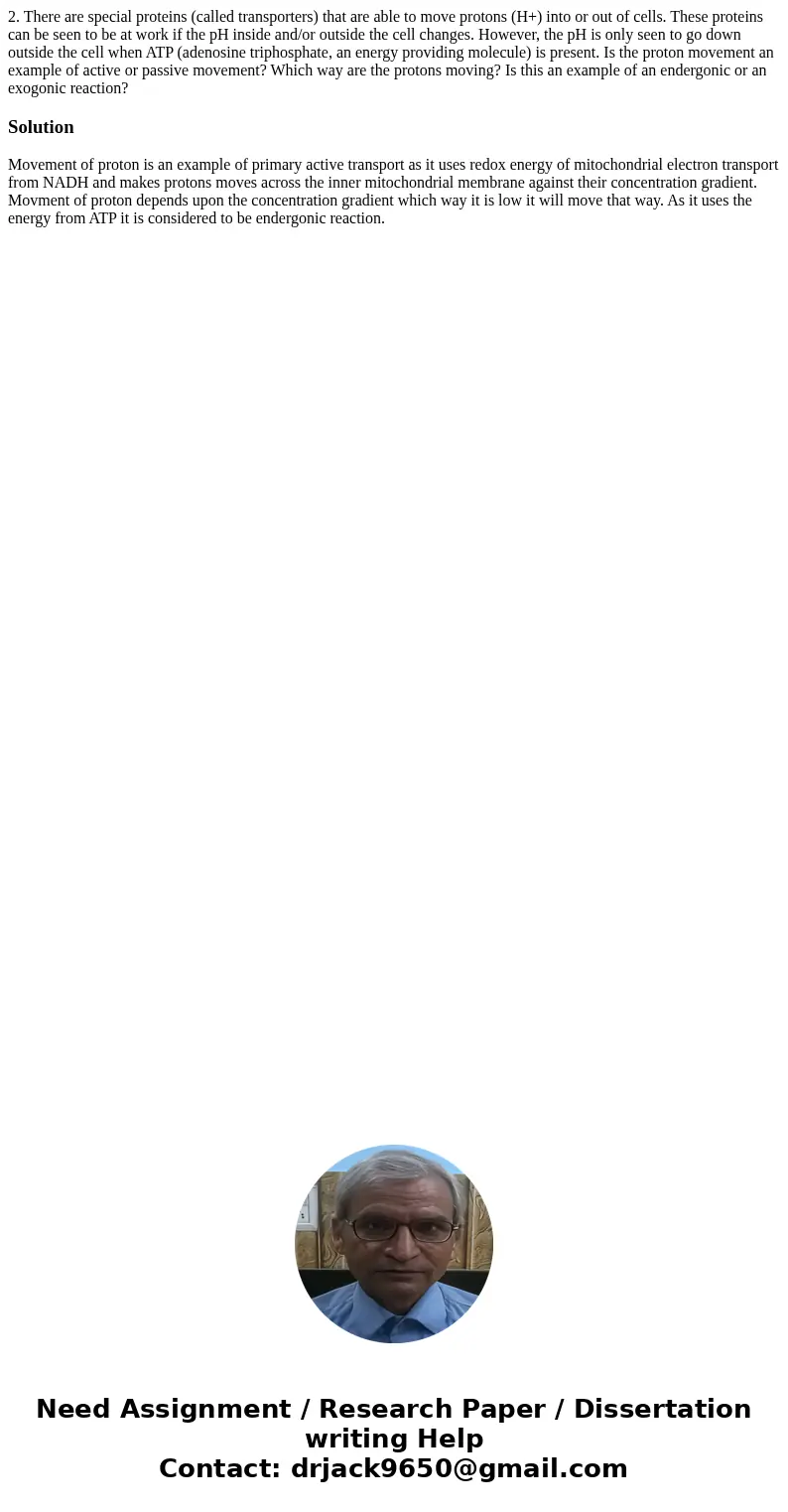2 There are special proteins called transporters that are ab
2. There are special proteins (called transporters) that are able to move protons (H+) into or out of cells. These proteins can be seen to be at work if the pH inside and/or outside the cell changes. However, the pH is only seen to go down outside the cell when ATP (adenosine triphosphate, an energy providing molecule) is present. Is the proton movement an example of active or passive movement? Which way are the protons moving? Is this an example of an endergonic or an exogonic reaction?
Solution
Movement of proton is an example of primary active transport as it uses redox energy of mitochondrial electron transport from NADH and makes protons moves across the inner mitochondrial membrane against their concentration gradient. Movment of proton depends upon the concentration gradient which way it is low it will move that way. As it uses the energy from ATP it is considered to be endergonic reaction.

 Homework Sourse
Homework Sourse